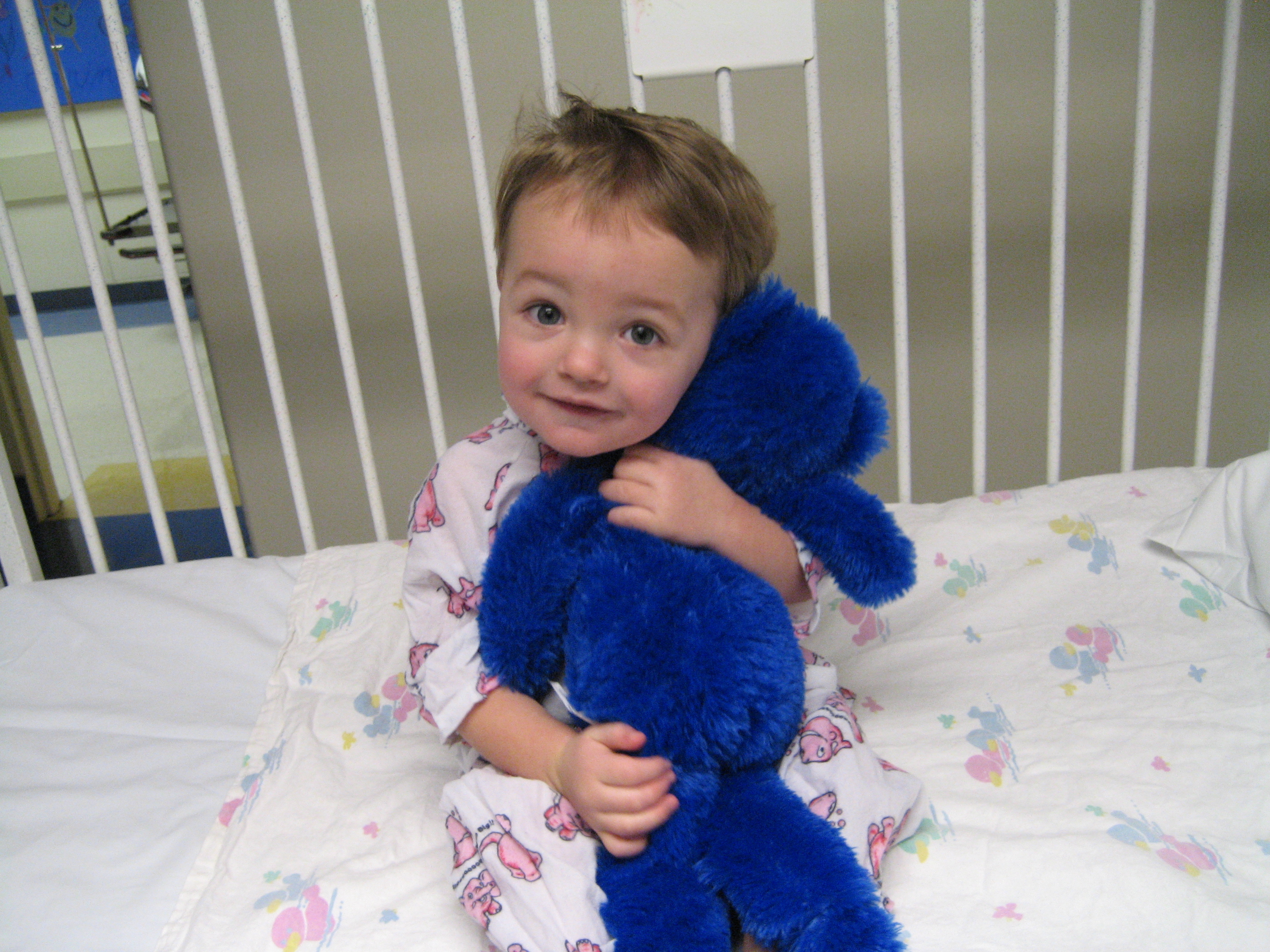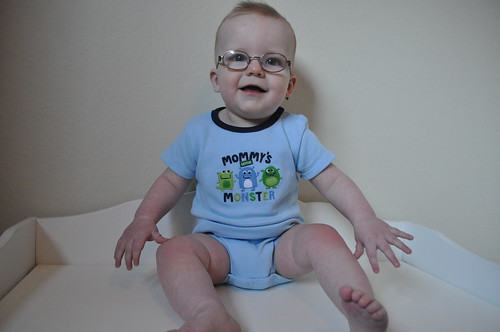Separation Anxiety

Separation anxiety and stranger anxiety occur when your child develops the mental ability to remember objects and people when they are no longer present, a skill called object permanence. Once your child has this skill he or she will probably search for his favorite toy when it has been put away or drops out of sight and cry whenever you are not in sight, because his memory is still incomplete and he has no sense of time, he believes that once you leave, you are gone forever. Stranger anxiety tends to develop in association with separation anxiety as the child gets better at telling the difference between familiar and unfamiliar faces and becomes more fearful of faces he doesn't know.
Most children exhibit some degree of separation anxiety around 6 to 8 months of age that lasts for 2 to 4 months; however, the age of the child and duration of the anxiety may vary greatly. Many children go through a second phase of separation anxiety around 18 months of age that eases as communication skills improve, and some children develop severe separation anxiety at night even when mom and dad are in the next room. A child's temperament plays a big role in the degree and duration of separation anxiety, so a child who adapts to new changes easily will probably have less anxiety than a child who has a difficult time with change.
Symptoms of normal separation anxiety include increasing unease and crying when separated from you or when you show signs of leaving. He or she may also exhibit whining, clinginess or insistence on physical contact with you, shyness, unusual silence, and an unwillingness to interact with others, even if they are familiar.
What to Do?
The root cause of separation anxiety is your child's inability to understand that you will return at some point after you leave, so teaching your child this concept will help him get over separation anxiety more quickly. Games such as peek-a-boo and "where's the baby?" are helpful in demonstrating this idea. To play "where's the baby," cover your baby's head with a small blanket or towel and ask "where's the baby?" and then pull the cloth off your baby's head and say "There you are!" You can also put the blanket over your head and let him pull it off you. You can also play a simplified version of hide-and-seek by partially hiding yourself behind a piece of furniture and then calling to your baby to come find you.
You can also practice trial separations with your baby. Tell him that you will be going into another room and that you'll be back soon. Repeat the assurances as you leave and talk to him from the other room to demonstrate that you still exist, even though he cannot see you. After a few moments, come back in the room. Gradually increase the length of these practice separations and he will eventually learn that it's okay if you are gone for a little while and that you'll always return.
When you do leave your baby, don't sneak away when he isn't looking; this will frighten and confuse him and will only exacerbate his feeling of abandonment. Instead, make your good-byes short and sweet when you leave. Tell your baby you love him, give him a kiss, say good-bye and tell him that you'll be back soon and then leave. Resist the temptation to return if he begins crying - this will only make it more difficult and develop bad habits. Also try to fight back any tears of your own if your baby gets upset, as hard as it may be to leave him. If she sees or senses that you are agonizing over the separation, it will only enhance his fear and insecurity. Try giving your baby favorite objects to comfort him while you're away, especially something that smells like you, such as your pajamas or a soft sweater you recently wore.
Separation anxiety is worse when your child is tired, hungry or sick, so try to avoid leaving if she's ill, and feed her before you go, and make sure she gets her nap that day. This is also not the time to try out a new babysitter, so if possible, choose a caregiver that your child knows well. However, if you do have to use an unfamiliar sitter, have him or her spend extra time getting to know your baby before you leave and make sure your child is comfortable with the individual before you say good-bye.
Separation Anxiety Disorder
If your child exhibits severe separation anxiety that he or she does not grow out of, he may have separation anxiety disorder, or SAD. SAD may occur because the child failed to form a secure attachment to a caregiver or because of repeated disruptions or prolonged separations (such as in cases of parental hospitalization, custody disputes, etc.). A history of anxiety disorder in one or more parent is also a possible cause of SAD. Some signs of SAD include:
Recurrent, excessive distress when separated
Excessive worry about harm occurring to the parent(s) or caregiver(s)
Reluctance to go anywhere without the parent(s) or caregiver(s)
Reluctance to be alone
Reluctance to sleep away from parent(s) or caregiver(s)
Repeated nightmares with the theme of separation
Vague complaints of physical symptoms like stomachaches or headaches that occur in anticipation of a separation from the parent(s) or caregiver(s).
Many children exhibit some or all of these symptoms without suffering from SAD; however, if your child displays these symptoms for at least 4 weeks and his daily life is impaired (he is unable to attend school or be left with a sitter), he or she should be taken to a child psychologist for evaluation and treatment.
|
|
Respected Readers:
Need your help to keep the site up and running. please donate ! Any help is appreciated.
|









